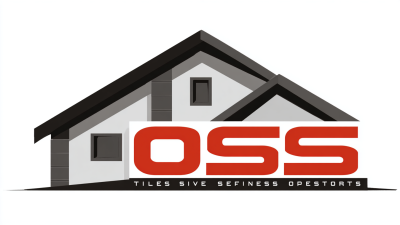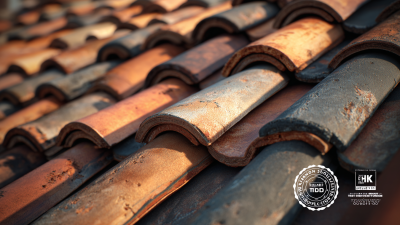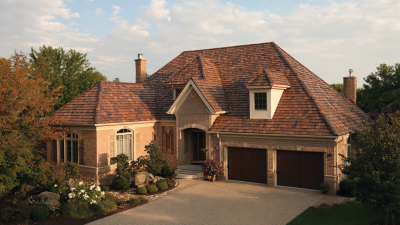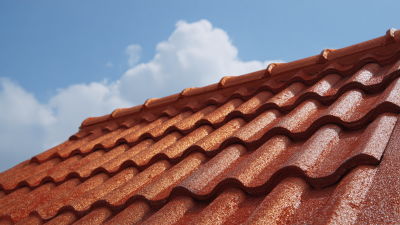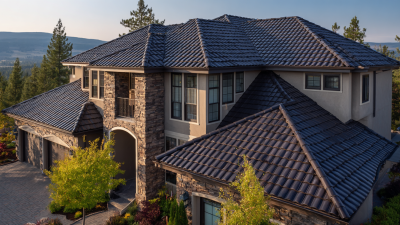
Leave Your Message
-
Phone
-
E-mail
-
Whatsapp

Choosing a tile roof for your home is not just a matter of aesthetics; it can significantly enhance your property's value and longevity. According to the National Roofing Contractors Association, roofs account for about 15% of a home's value, making the right choice crucial for homeowners looking to invest wisely.
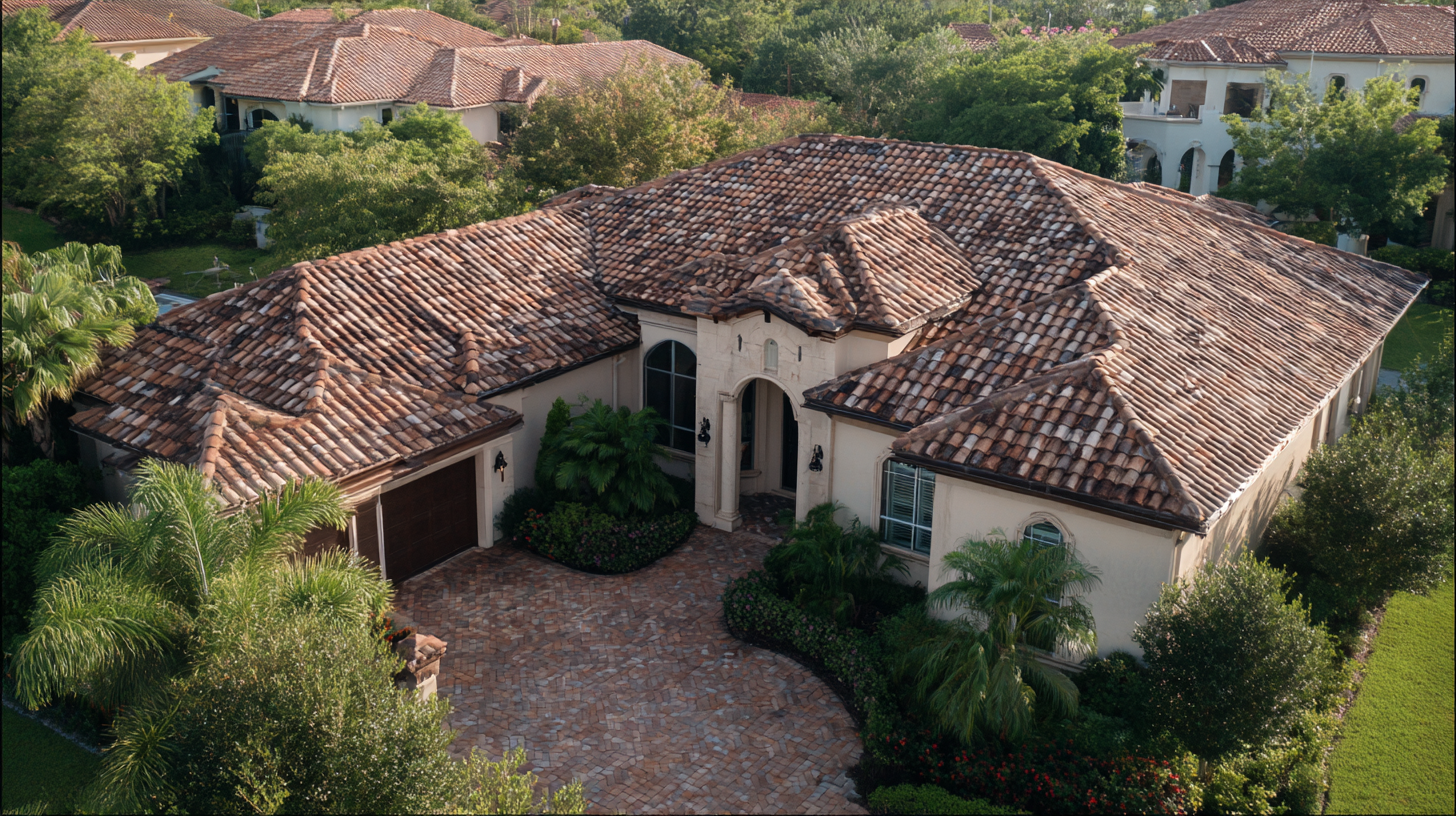 Tile roofs, known for their durability and energy efficiency, can last upwards of 50 years, far outpacing traditional asphalt shingles that typically last only 20 years. Furthermore, a study by the 2019 Remodeling Report indicates that homes with tile roofs recoup over 70% of their investment at resale compared to less durable materials. The unique characteristics of tile roofs, such as their resistance to fire and ability to withstand harsh weather conditions, not only improve the overall aesthetic appeal but also contribute to lower insurance premiums. In a competitive real estate market, a tile roof can be a distinctive feature that sets your home apart, ultimately leading to improved long-term financial benefits.
Tile roofs, known for their durability and energy efficiency, can last upwards of 50 years, far outpacing traditional asphalt shingles that typically last only 20 years. Furthermore, a study by the 2019 Remodeling Report indicates that homes with tile roofs recoup over 70% of their investment at resale compared to less durable materials. The unique characteristics of tile roofs, such as their resistance to fire and ability to withstand harsh weather conditions, not only improve the overall aesthetic appeal but also contribute to lower insurance premiums. In a competitive real estate market, a tile roof can be a distinctive feature that sets your home apart, ultimately leading to improved long-term financial benefits.
When it comes to enhancing your home's appeal and value, choosing tile roofs offers
significant advantages that set your property apart in the market. Tile roofs are known
for their durability and aesthetic versatility, which can attract potential buyers.
Their unique appearance allows homeowners to express their style, while their long lifespan
of 50 years or more assures buyers that they are making a sound investment.
Tips: If you’re considering tile roofing, select colors
and styles that complement your home’s architecture. This not only preserves the overall
aesthetic but also enhances curb appeal, making your property more attractive to buyers.
Moreover, tile roofs provide excellent energy efficiency and weather resistance.
Their natural insulation properties can lead to lower energy bills, appealing to eco-conscious buyers.
In regions prone to extreme weather, tile roofs withstand high winds, heavy rains, and intense heat
better than many other materials, ensuring your home remains a safe haven.
Tips: Regular maintenance is key. Ensure that your
tile roof is inspected periodically to prevent leaks and damage, maintaining its appearance and function
over time. This not only keeps your roof in excellent condition but also upholds the value of your home.
When considering roofing options for your home, longevity and durability are critical factors that can significantly impact your investment. Tile roofs are renowned for their impressive lifespan, often lasting up to 50 years or more, especially when compared to traditional asphalt roofs, which typically need replacement every 15 to 30 years. The robust materials used in tile roofing, such as clay or concrete, provide exceptional resistance to weather elements, including heavy rain, strong winds, and extreme temperatures. This remarkable durability means homeowners can enjoy peace of mind, knowing that their roof can withstand the test of time.
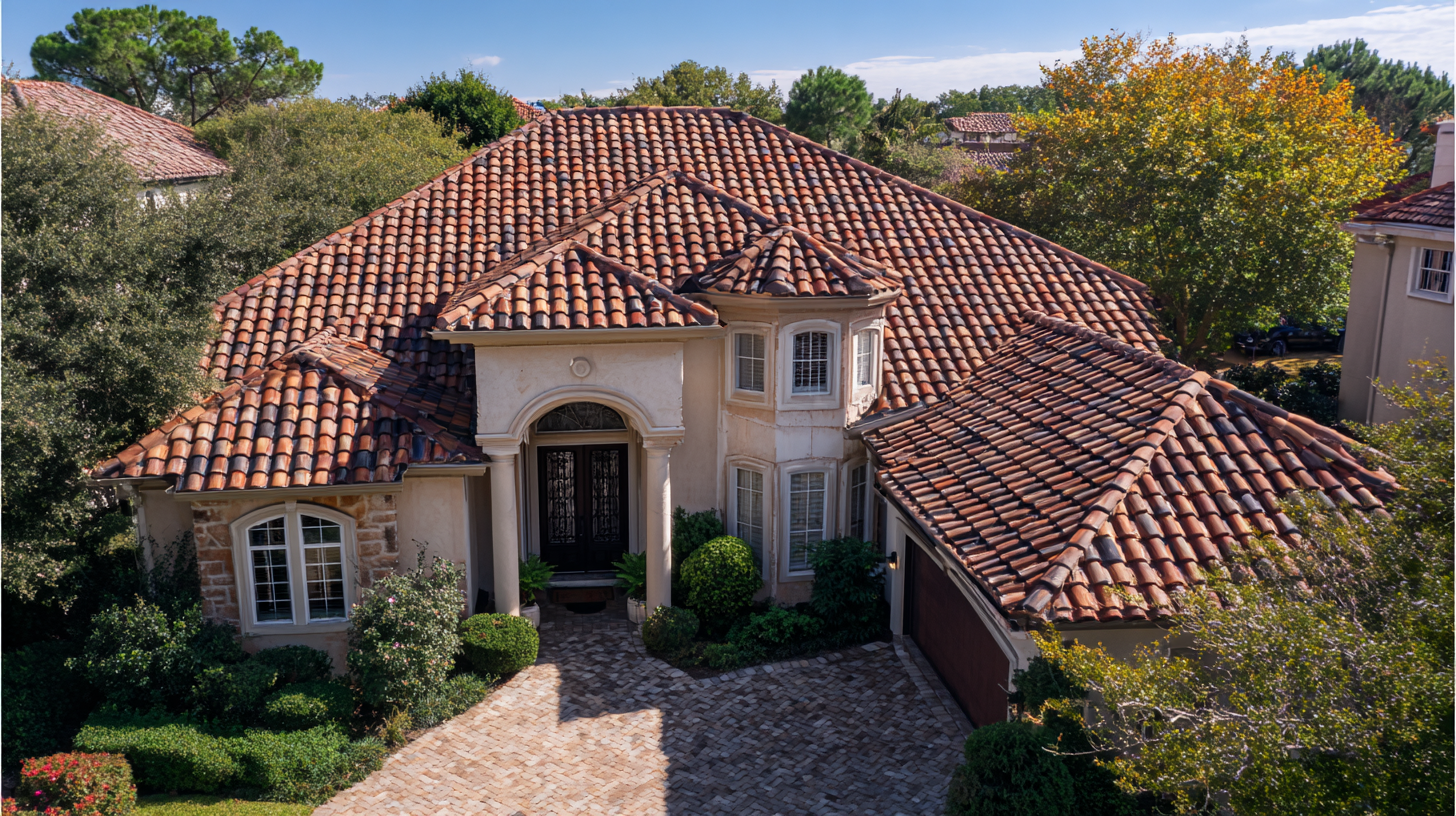
Moreover, the longevity of tile roofs not only offers practical benefits but also enhances the overall value of your home. Potential buyers often view a tile roof as a sign of quality and maintenance excellence, which can lead to higher resale value. In neighborhoods where tile roofs are the norm, having one can improve your property’s appeal, distinguishing it from others with less durable roofing. Ultimately, investing in a tile roof is not just about immediate aesthetics; it is a forward-thinking choice that combines longevity with an increased return on investment.
The energy efficiency of tile roofs is gaining recognition as an effective strategy for improving heat regulation and facilitating cost savings for homeowners. Studies indicate that tile roofs can significantly lower cooling costs, especially in warmer climates, by reflecting sunlight and reducing heat absorption. This property aligns with the California Energy Code's directive for increased cool roof requirements, emphasizing the importance of materials that minimize energy expenditure in residential buildings.
Recent advancements in sustainable building materials further highlight the role of tile roofs in enhancing energy efficiency. For instance, innovative designs inspired by natural elements, such as mycelium tiles, demonstrate the potential for improved thermal regulation in buildings, suggesting a shift towards integrating sustainable practices in roofing choices. Reports indicate that optimizing insulation in conjunction with high-performance roofs can lower heating and cooling expenses by up to 30%, offering substantial benefits to homeowners while contributing to environmental sustainability efforts. The combination of energy-efficient roofing materials and proper insulation not only extends the longevity of the home but also significantly enhances its overall market value.
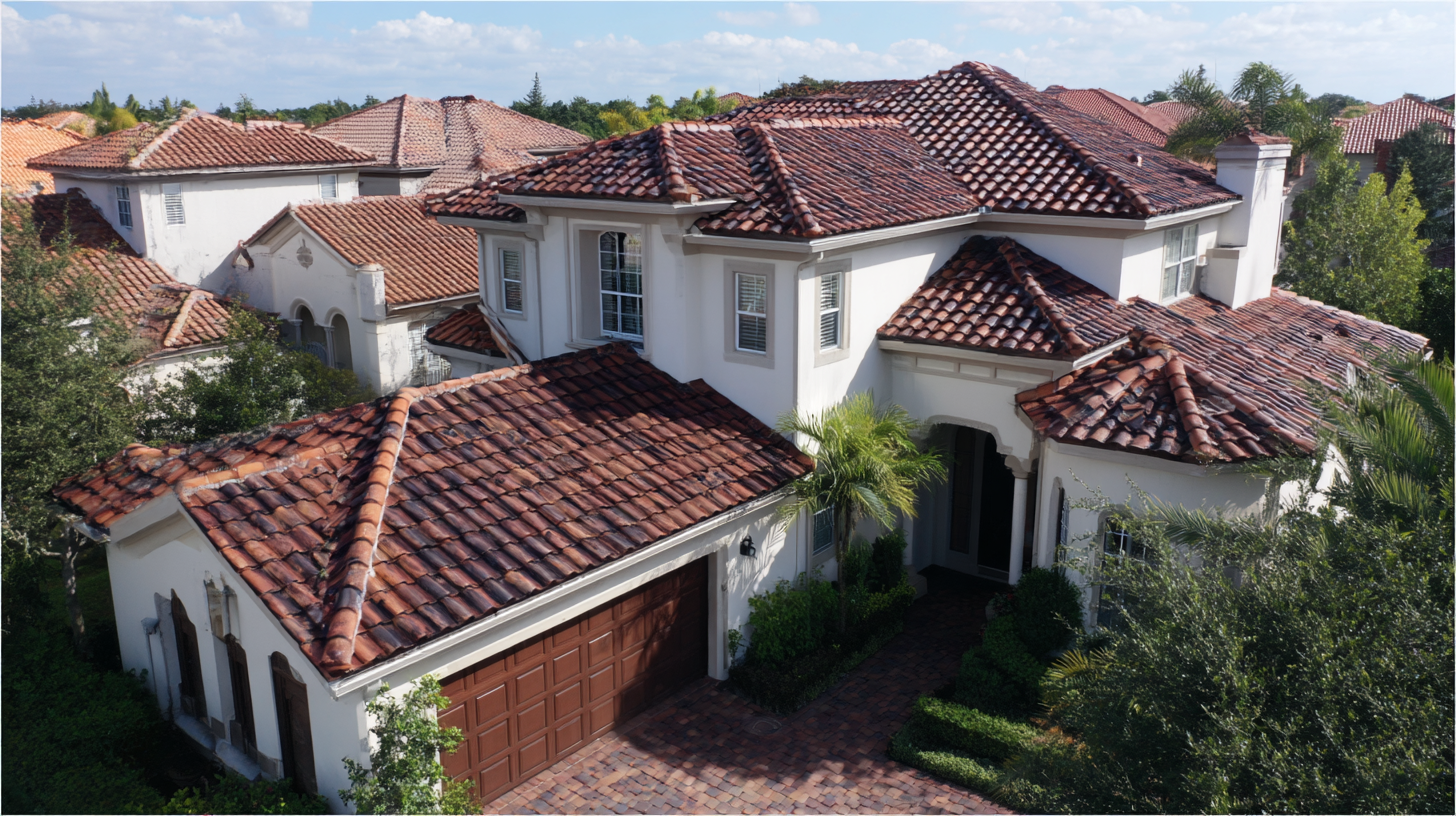 Tile roofs are not only aesthetically pleasing but also environmentally friendly, making them an excellent choice for homeowners looking to enhance their property’s value. One of the key advantages of tile roofs is their composition of sustainable materials. Many tiles are made from clay or concrete, both of which are abundant and have a lower environmental impact compared to synthetic roofing materials. This use of natural elements helps reduce the carbon footprint of your home.
Tile roofs are not only aesthetically pleasing but also environmentally friendly, making them an excellent choice for homeowners looking to enhance their property’s value. One of the key advantages of tile roofs is their composition of sustainable materials. Many tiles are made from clay or concrete, both of which are abundant and have a lower environmental impact compared to synthetic roofing materials. This use of natural elements helps reduce the carbon footprint of your home.
Furthermore, the end-of-life recyclability of tile roofs is a significant benefit. When the time comes to replace your roof, tiles can often be reclaimed and used for other construction projects or repurposed into new materials. This circular approach minimizes waste and aligns with eco-conscious living.
Tips: To maximize the environmental benefits of your tile roof, consider opting for tiles that come from local manufacturers to reduce transportation emissions. Additionally, when replacing or repairing your roof, look for contractors who prioritize recycling materials. This not only aids in sustainability but can also save you money on disposal costs.
Tile roofs are not only aesthetically pleasing but also offer substantial insurance benefits that can lower your premium rates. Many insurance companies recognize that tile roofs are more durable and resistant to damage from harsh weather conditions compared to traditional roofing materials. This durability minimizes the likelihood of claims, leading insurers to offer discounts on premiums for homes with tile roofing. Homeowners can enjoy a safer, more reliable roof while also saving money on their insurance costs.
Moreover, tile roofs can significantly increase your home's resale value. Prospective buyers are often willing to pay more for a home with a tile roof due to its long lifespan and low maintenance requirements. This is particularly appealing in markets where extreme weather is common, as buyers prioritize properties that offer resilience and lower long-term costs. Therefore, investing in a tile roof can be a smart financial decision that not only enhances your living space but also provides returns in terms of lower insurance premiums and increased resale value.
